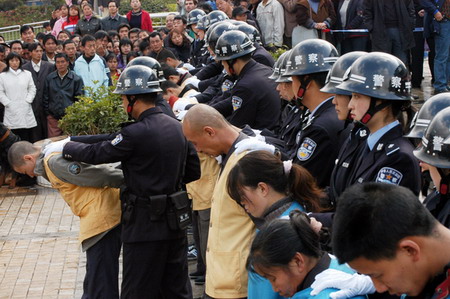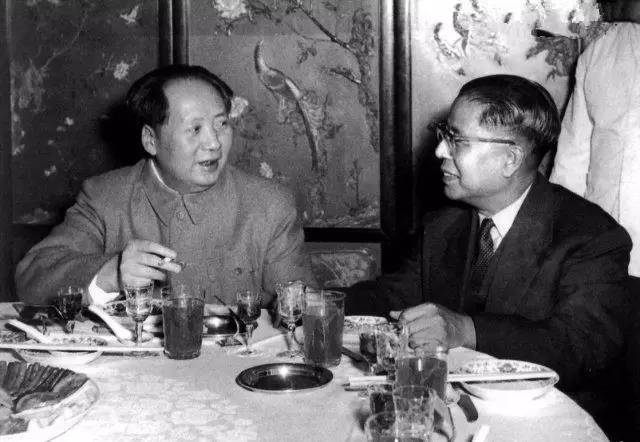�ϲ����ƽ���֢��ҽԺ����-���ϲ��е�ʮ��ҽԺ����ơ����ϲ��е�ʮ��ҽԺ�����,������ѵ��ϲ��Ǽ�ҽԺ�ȽϺ�,�ϲ��Ǽ�ҽԺ���λþ�,�ϲ��е�ʮ��ҽԺ�������ҽ��רҵ,�ϲ���ҽ������֢,�ϲ��Ǽ�ҽԺ�����ж��ɿ�,�ϲ�ҽ��ר��ҽԺ
�����ϲ����ƽ���֢��ҽԺ������ȥ�ϲ��ļ�ҽԺ,�ϲ��й�Ӫ��ҽԺ,�ϲ��η���֢ҽԺ�����,�ϲ�����ļ�ҽԺ�Ϻ�,�ϲ���˫������ϰ�ר��ҽԺ,�ϲ��������֢�취,�ϲ���ʮ��ҽԺ���ƾ�����������רҵô
���� ����
����When Amy Anderson and her son walked into George Washington High School years ago they felt a gut-wrenching reaction, coming face to face with a larger than life mural depicting images of slavery and dead Native Americans.Tuesday evening, after decades of debate and outcry, the San Francisco Unified School District unanimously voted to cover up this 1936-era fresco, "Life of Washington."A fight started in the 1960sThe mural was commissioned by the US Government in 1936 under a New Deal art program and painted by well-known muralist Victor Arnautoff.During the Civil Rights Movement in the late 1960's, members of school's Black Student Union called for the removal of the mural.Instead of removing the mural then, the District hired black artist Dewey Crumpler to paint a "response mural," showing Native Americans and African Americans in a more positive light.Three years ago, the call for removal was reignited when Anderson's son Kai decided to enroll at Washington High.A Native American student at Washington HighAnderson and her son are Native American. Kai told his mom he would walk into school with his head down everyday so he would not have to see the murals on the wall."They (Native students) actually see themselves and their ancestors up there on those walls and they feel pain," said Anderson.In late fall of 2018, Anderson and fellow indigenous activist Mariposa Villaluna drafted a resolution to send to Mark Sanchez, a school board commissioner. The move resulted in the creation of the district's Reflection and Action Committee to decide what to do about the "Life of Washington" mural.In February, the committee recommended to the school board that the mural should be covered in white paint before the start of the 2019 school year.At odds with school valuesThe committee argued that the mural did not live up to the district's student-centered focus and did not represent its values of social justice, diversity, and unity. It added that the mural glorified slavery, genocide, and oppression.At Tuesday evening's school board meeting, those in favor of keeping the mural argued the that artist intended to provoke thoughtful discussions about oppression and that the mural could be used as a teaching tool for future generations.Villaluna said the school can find ways to teach these issues without students having to pass by the mural each morning."The students thought this would be good as a lesson but not something we walk by every day," said Villaluna.According to the 2517
����VATICAN CITY �C The Vatican is reportedly using donations meant for the weak and suffering to plug the hole in its administrative budget.People familiar with the funds 179
���� ����
����WATERLOO, Iowa �C Jim Cornette, a longtime wrestling commentator, has resigned from the National Wrestling Alliance (NWA) after making a racist comment during a match on Tuesday. While calling a match between Nick Aldis and Trevor Murdoch, 251
����Uranium ore stored at the Grand Canyon National Park museum may have exposed visitors and workers to elevated levels of radiation, according to the park's safety, health and wellness manager.Elston Stephenson told CNN that he began asking officials from the National Park Service and Department of the Interior last summer to warn workers and tourists they had possibly been exposed to unsafe levels of radiation. After his requests were ignored, he said he sent an email to all park staff at the Grand Canyon on February 4."If you were in the Museum Collections Building (bldg 2C) between the year 2000 and June 18, 2018, you were 'exposed' to uranium by OSHA's definition," said the email, which Stephenson provided to CNN."Please understand, this doesn't mean that you're somehow contaminated, or that you are going to have health issues. It merely means essentially that there was uranium on the site and you were in its presence. ... And by law we are supposed to tell you."The National Park Service is investigating what happened and working with the Occupational Safety and Health Administration and the Arizona Department of Health Services, according to the Department of the Interior, which oversees the park service."Uranium naturally occurs in the rocks of Grand Canyon National Park. A recent survey of the Grand Canyon National Park's museum collection facility found radiation levels at 'background' levels -- the amount always present in the environment -- and below levels of concern for public health and safety. There is no current risk to the public or Park employees," the department said in a statement provided to CNN. The National Park Service also said there is "no current risk" to the public or park employees."The museum collection facility is open and employee work routines have continued as normal," Emily Davis, spokeswoman for the Grand Canyon National Park, said in a statement. "The NPS takes public and employee safety and the response to allegations seriously. We will share additional information about this matter as the investigation continues."Stephenson told CNN that in early June he found out about three 5-gallon buckets of uranium ore that had been stored next to a taxidermy exhibit at the park's museum for nearly two decades. He said he immediately contacted a park service radiation specialist to report the danger.According to a report from a park service radiation safety officer who responded to Stephenson's request on June 14, 2018, testing results were positive for radioactivity above background levels near the buckets, but elsewhere the radiation levels were not elevated.Still, according to the report, the park service decided to remove the buckets on June 18 and dispose of the contents in the nearby Lost Orphan uranium mine, where the ore had come from.Stephenson told CNN that park service workers were inadequately prepared to handle the radioactive material, moving the buckets wearing gardening gloves purchased at a general store, and using mop handles to lift the buckets into pickups for transport.Stephenson said that after trying and failing for months to get National Park Service officials to inform employees and the public about the possible uranium exposure, he filed a complaint with OSHA in November.The next day, Stephenson said, OSHA sent inspectors in protective suits to check the museum and found that park service workers brought the buckets back to the park facility after dumping the uranium ore."OSHA has an open investigation on the issue that was initiated on November 28," OSHA spokesman Leo Kay said in statement to CNN, declining to comment further on an active investigation.Staff for US Rep. Tom O'Halleran, D-Arizona, met with Stephenson in December, according to Cody Uhing, the congressman's communications director."We flagged this to the Natural Resources Committee, which is responsible for oversight for that area. They and we have requested the Department of the Interior's Office of the Inspector General to look into it and provide us with a report," Uhing said.The Department of the Interior's Office of the Inspector General confirmed Tuesday that it had received a letter from O'Halleran and that it would review it.Anna Erickson, associate professor of nuclear and radiological engineering at Georgia Tech, said the uranium exposure at the museum is unlikely to have been hazardous to visitors."Uranium ore contains natural (unenriched) uranium which emits relatively low amounts of radiation," Erickson said. "Given the extremely low reading (zero above background) 5 feet away from the bucket, I'm skeptical there could be any health hazards associated with visiting the exhibit."Stephenson told CNN that tours of schoolchildren often walked by the buckets at the museum, but his larger concern was for park employees and high school interns working near the uranium every day."A safe workplace really is a human right," he said. 4984
����Val��rie P��cresse, the President of the ?le-de-France region in which Paris lies, has told reporters that the fire at Notre Dame Cathedral was an accident. "This was an accident. It wasn��t intentional," she said.P��cresse said the region would unlock an emergency fund of �10 million euros (.3 million) to help in the rebuild efforts.The cathedral of Notre Dame in Paris is home to scores of priceless artifacts, artwork and relics collected over the centuries, each with their own story.As a devastating fire tore through the revered Gothic cathedral on Monday, toppling its spire, many feared these treasures might be lost forever.A "forest" of wooden latticework fueled the blaze which consumed the building's roof, whose framework dates back to the 13th century, according to Msgr. Patrick Chauvet, the cathedral's rector.The Paris Fire Brigade tweeted that the cathedral's stone construction has been "saved," as have the "main works of art." As more information emerges, what has been rescued from Notre Dame is becoming apparent.Yet many details, such as possible water damage from the operation to save the building, are still unclear.What was saved? The Crown of Thorns, which some believe was placed on the head of Jesus and which the cathedral calls its "most precious and most venerated relic," was rescued from the fire, according to Paris Mayor Anne Hidalgo.? Hidalgo confirmed the Tunic of Saint Louis and other "major" works were also saved.? The facade and twin bell towers, the tallest structures in Paris until the completion of the Eiffel Tower in the late 19th century, survived the blaze.The North tower was completed in 1240 and the South tower in 1250.? The cathedral's main bell, Emanuelle, lives in the South tower. It has marked significant moments in French history, such as the end of World War II, as well as holidays and special occasions.? The Rose windows are a trio of immense round stained-glass windows over the cathedral's three main portals that date back to the 13th century. The Archbishop of Paris said all three have been saved, reports CNN affiliate BFM TV.? The original Great Organ, one of the world's most famous musical instruments, dates back to medieval times. Over the years, organ makers renovated the instrument and added onto it, but it still contained pipes from the Middle Ages before Monday's fire.The position of titular organist, or head organist, carries great prestige in France and around the world. The Archbishop of Paris confirmed the organ is safe, reports CNN affiliate BFM TV.Fate of other artifacts unconfirmed"We managed to protect the most precious treasures in a safe place," a Paris City Hall spokesperson told CNN.However it has not been confirmed whether individual items such as a fragment of the True Cross and one of the Holy Nails were saved.? There were also numerous sculptures, statues and paintings inside the cathedral depicting Biblical scenes and saints.One series of 76 paintings, each nearly four meters tall, commemorates the New Testament's Acts of the Apostles, including the crucifixion of St. Peter and the conversion of St. Paul. The works were completed between 1630 and 1707 by the members or associates of the Royal Academy of Painting and Sculpture.Another painting is from a series by Jean Jouvenet depicting the life of the Virgin Mary. All six from the series used to be in the cathedral. They were moved to the Louvre in the 1860s, and only "The Visitation" was returned to Notre Dame.A portrait from 1648 of St. Thomas Aquinas also graced the cathedral's interiors.? It is not yet clear how much damage there is to the cathedral's exterior, where a menagerie of menacing gargoyles and chimeras stand guard and a system of flying buttresses support the outside walls.A Paris police source told CNN that part of the vault has collapsed in the central nave, and architects are checking whether the structure is stable.? The cathedral also has an archaeological crypt under the courtyard. It was created to protect 19th-century relics that were discovered during excavations in 1965. It opened to the public in 1980. 4127


